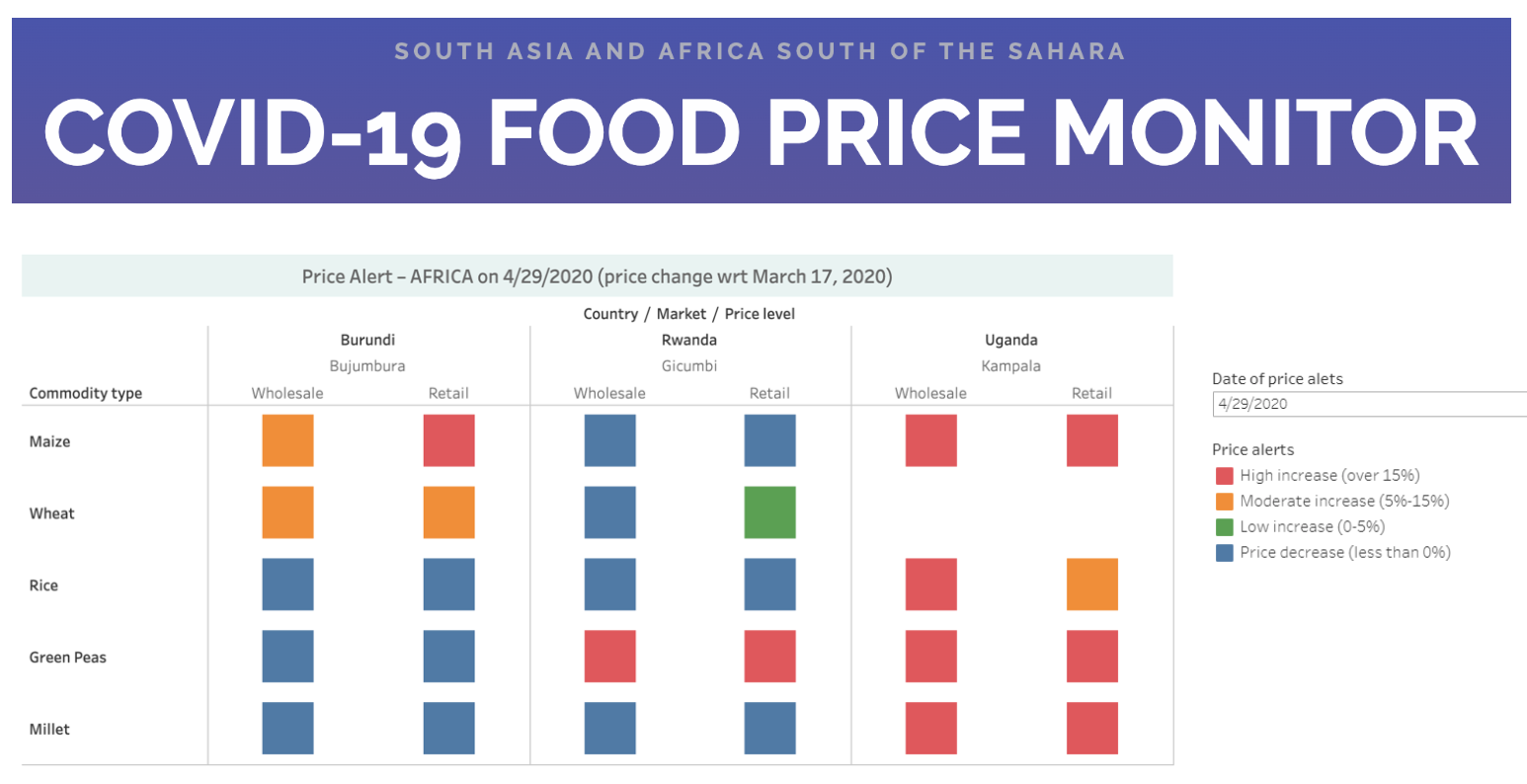IFPRI’s new COVID-19 Food Price Monitor tracks warning signs of stress in local markets
Daily food price data in multiple countries and markets are needed to provide information to identify and respond to local and national shocks. A new Food Price Tracker tool launched by IFPRI is now available to meet this demand.
Many fear that food supply disruptions caused by COVID-19 could lead to price spikes and erode people’s access to food in low- and middle-income countries. Price spikes can be early warning signals of tightness of food markets. Since the 2007-2008 food price crisis, IFPRI’s Food Security Portal has been monitoring global markets for staples including wheat, maize, rice, and soybeans. Prices in these markets are easy to monitor on a daily basis thanks to good data systems. Since the COVID-19 outbreak, these markets have remained relatively stable.
What matters to consumers, however, are the prices they face in the local markets where they buy their food. So, what is happening to the prices in those markets? The short answer is that we don’t really know. The problem is that price reporting systems are dispersed and often specific to individual food items. Consumer prices tend to be collected at relatively low frequency (monthly, quarterly) and published with considerable time lags. It is difficult to identify possible food supply chain hotspots from such sparse and dispersed price data.

To fill this gap, the Food Security Portal has launched the COVID-19 Food Price Monitor for South Asia and Africa south of the Sahara. The Monitor allows users to track changes in food prices since the start of COVID-19 social distancing measures. Daily updates of prices in wholesale and retail markets are provided for a wide range of key food products.
The COVID-19 Food Price Monitor currently provides daily updates of food price movements in wholesale and retail markets in India, Rwanda, Uganda, and Burundi. Resources and data permitting, it will seek to expand this coverage shortly, starting with additional countries in Africa.
It will raise red flags for wholesale and retail markets and food commodities showing high price increases. This way, the Monitor serves as a temperature check of how local market conditions for staple and non-staple foods have been changing since the outbreak of COVID-19 and the imposition of containment measures.
The Monitor is already raising a number of these red flags. In nearly all markets in India, potato prices have increased by more than 15% from pre-COVID levels. In Uganda, prices of most key foods have increased by more than 15% since mid-March.
Monitoring food prices is particularly important during the COVID-19 crisis. Food prices strongly influence livelihoods and dietary choices made by farmers, traders, processors, and consumers. When markets are tight, prices are sensitive to shocks such as a bad harvest—or today, pandemic-related supply disruptions. For the poor who spend most of their income on food, any food price increase may put their food security at risk. Price spikes could point at supply disruptions and stock shortages. While the Monitor does not pinpoint such immediate causes, we hope it will alert policy makers to emerging problems in supply chains and the specific populations affected, helping to spur quicker responses to ensure people’s continuous access to food.
For the Monitor’s current country coverage, daily price data is obtained from Agriculture Marketing (AGMARKNET) for India and from the Regional Agricultural Trade Intelligence Network (RATIN) for the countries in Africa south of the Sahara. AGMARKNET is a platform facilitated by the Directorate of Marketing & Inspection (DMI) of the Ministry of Agriculture and Farmers Welfare of India. It provides daily wholesale prices for 260 staple and non-staple food items across about 1,500 urban and rural markets across India. RATIN provides wholesale and retail prices in key urban markets located in major cities of selected East African countries. In both sources, data reporting is mostly regular and up-to-date, though for some food items price data may be missing for certain days. The COVID-19 Food Price Monitor presents the original reported data only.
As we work to expand country coverage, we welcome any access to daily food price data that governments and organizations could provide to help broaden the reach of the COVID-19 Food Price Monitor.